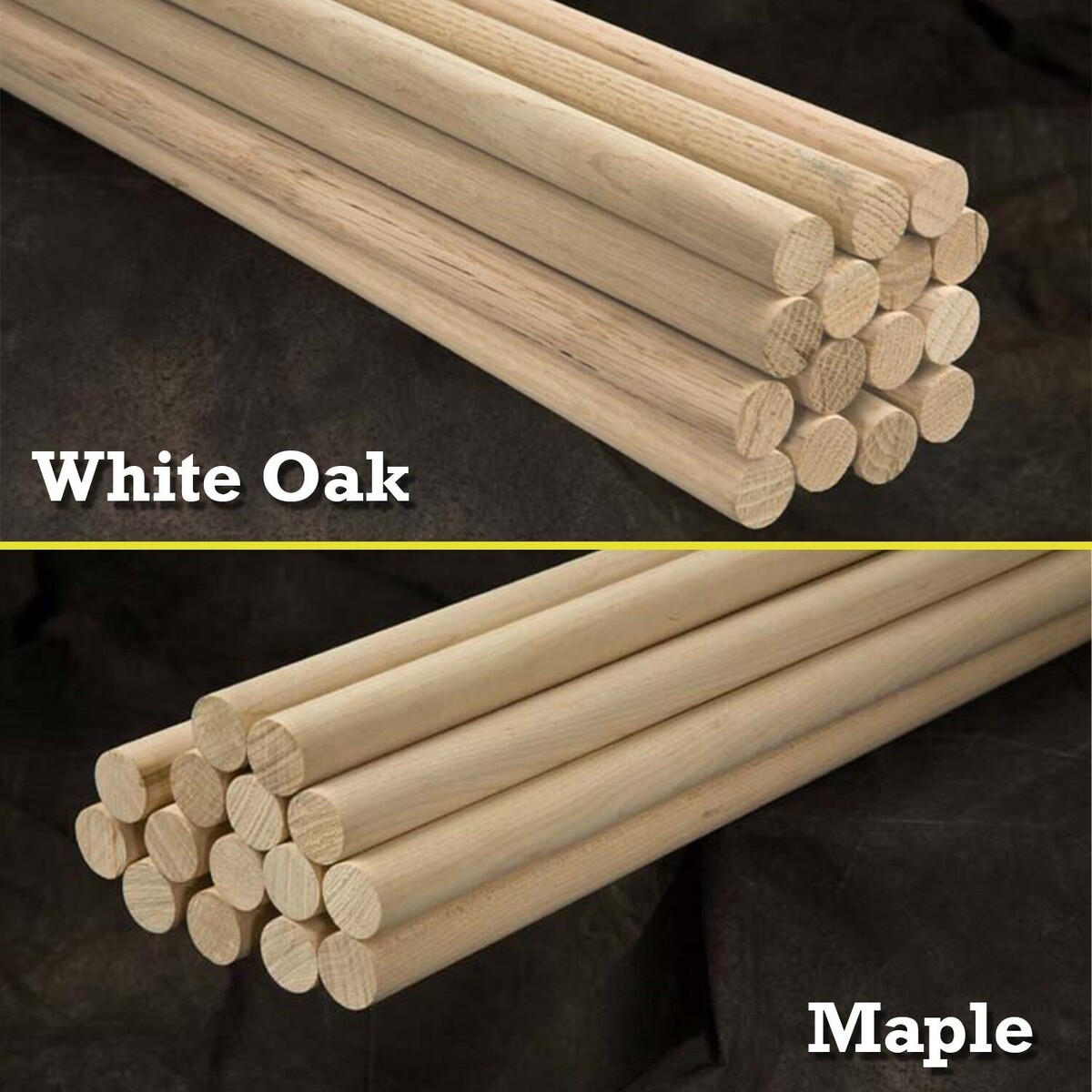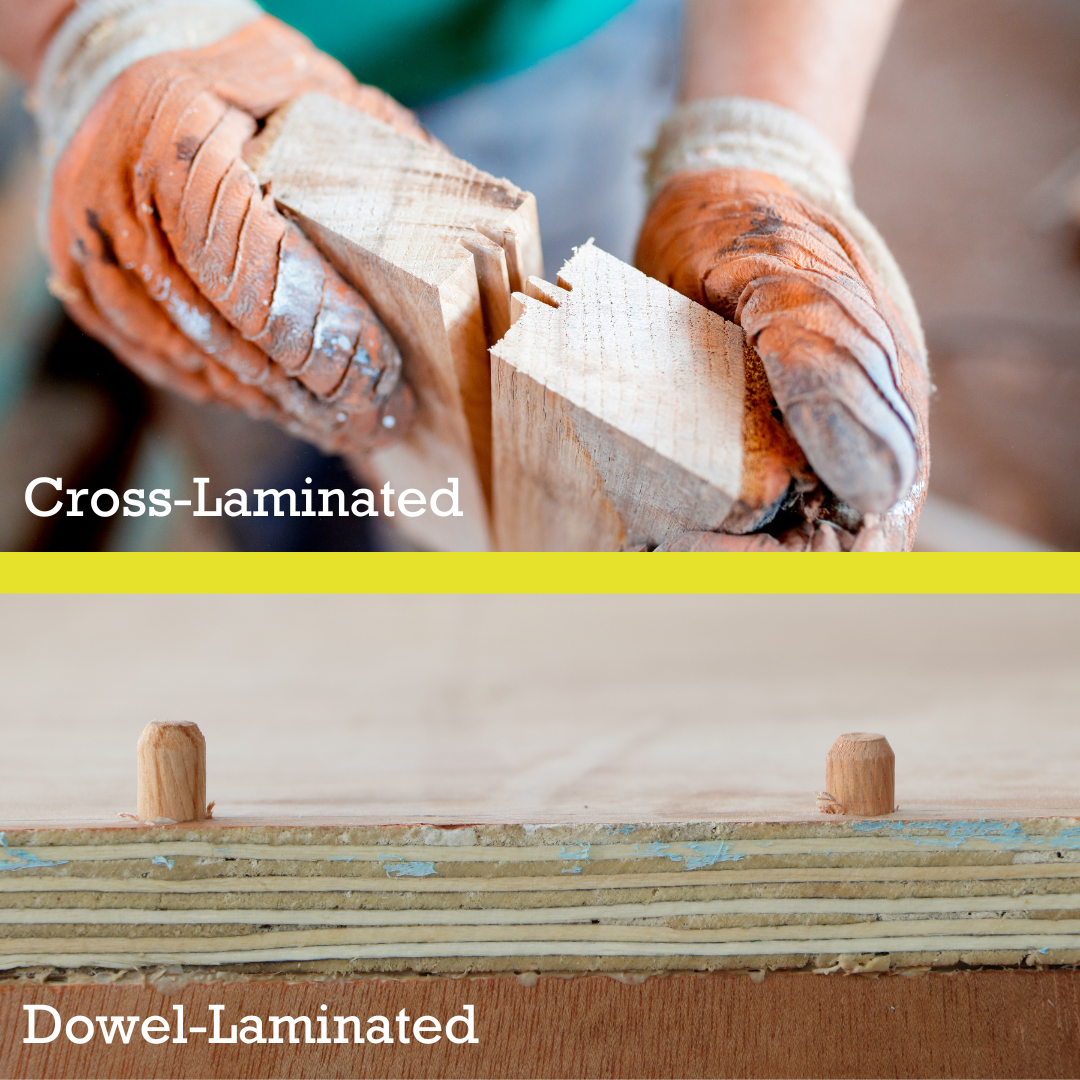Wooden Dowels and Their Role in Sustainable Architecture

Sustainable architecture is gaining momentum across the globe as architects and builders seek materials and construction methods that reduce environmental impact. As the push for greener, more eco-friendly designs continues to rise, wood has emerged as a leading material due to its renewability and carbon-sequestering properties.
Among the most versatile wood components contributing to sustainable architecture are wooden dowels. These simple, cylindrical rods play a crucial role in joining, reinforcing, and stabilizing structures, all while promoting environmentally responsible building practices.
Cincinnati Dowel & Wood Products offers a range of wood dowels tailored for use in construction, furniture, and decorative applications.
In this blog post, we explore how wooden dowels are becoming integral to sustainable architecture, supporting greener building initiatives, and creating durable, aesthetically pleasing structures.
What Makes Wooden Dowels Sustainable?
The key to sustainable architecture lies in using materials that are renewable, have a low environmental footprint, and contribute positively to the lifecycle of a building. Wooden dowels check all these boxes.
Renewable and Biodegradable Material
Wood is a renewable resource, and responsibly harvested timber ensures that new trees are planted to replace those used. Wooden dowels, like those offered by Cincinnati Dowel, are made from sustainable hardwoods such as oak, maple, and birch. These trees are grown and harvested with environmental responsibility in mind, reducing deforestation and promoting healthy forest ecosystems.
In addition to being renewable, wood dowels are biodegradable. When a building reaches the end of its life cycle, wooden dowels can naturally decompose without leaving harmful residues in the environment, unlike metal or plastic fasteners, which contribute to landfill waste.
Low Carbon Footprint
Wood, by its very nature, has a lower carbon footprint compared to materials like steel, concrete, or plastic. Wooden dowels sequester carbon dioxide from the atmosphere as trees grow, locking it away for the lifetime of the dowel. This ability to act as a carbon sink makes wood an essential component in reducing the overall carbon emissions of a building project. Moreover, producing wooden dowels requires less energy compared to manufacturing metal fasteners, further decreasing their environmental impact.

Durability and Strength
One of the reasons wooden dowels are increasingly popular in sustainable architecture is their strength and durability. Wood dowels provide robust joining capabilities in construction without the need for adhesives or metal fasteners, both of which have higher energy demands and environmental consequences.
Cincinnati Dowel’s hard maple and white oak dowels, for instance, offer superior strength, making them ideal for load-bearing joints in wooden frames and other architectural structures.
Wooden Dowels in Timber Construction
As architects embrace timber construction for its sustainability benefits, wooden dowels have found their way into innovative building techniques that prioritize environmental consciousness.
Traditional Timber Framing
Timber framing has been used for centuries, and one of the essential components of this method is the wooden dowel, or peg. Traditionally, wooden pegs were used to join mortise and tenon joints, creating sturdy structures without the need for metal nails or screws.
Cincinnati Dowel provides hardwood dowels that are ideal for this type of construction, offering a sustainable and aesthetically pleasing way to fasten timber frames. This method reduces the reliance on synthetic materials while creating a strong, flexible frame that can stand the test of time.

Cross-Laminated Timber (CLT) and Dowel-Laminated Timber (DLT)
More recently, cross-laminated timber (CLT) and dowel-laminated timber (DLT) have revolutionized sustainable architecture. CLT involves layering wood in alternating directions and bonding them together, creating a material that rivals steel in terms of strength and versatility.
Wooden dowels play a crucial role in DLT, where they are used to fasten layers of wood together without the need for glue or synthetic adhesives. This technique, often referred to as "pure wood construction," further minimizes the environmental impact of construction materials.
DLT panels, fastened entirely with dowels, are not only incredibly strong but also completely natural, ensuring that the entire structure is composed of biodegradable and renewable materials. Cincinnati Dowel’s oak and birch dowels are well-suited for such construction, providing the necessary strength for large-scale structural projects.
Wooden Dowels in Green Furniture and Interior Design
Sustainable architecture is not just about the building's frame—it's about everything inside it. Wooden dowels are also key players in sustainable interior design and furniture making, contributing to eco-friendly and functional living spaces.
Furniture Assembly Without Metal Fasteners
One of the growing trends in eco-conscious furniture design is the use of wooden dowels instead of metal screws or nails. Wooden dowels allow for seamless and sturdy joinery in tables, chairs, shelving, and cabinetry. They provide a cleaner, more natural aesthetic and help reduce the overall environmental footprint of furniture manufacturing.
Cincinnati Dowel offers a range of maple, poplar, and oak dowels that are perfect for furniture assembly. These dowels create strong, invisible joints that allow for easy assembly and disassembly, encouraging furniture longevity and repairability rather than disposal. This fits into the broader concept of circular design, where products are built to last and be repaired rather than thrown away.
Decorative and Functional Design Elements
Wood dowels also lend themselves to creative applications in interior design. From creating minimalist wooden wall panels to decorative lighting fixtures and room dividers, dowels provide a sustainable and versatile solution for adding texture and warmth to interior spaces. The smooth birch dowels offered by Cincinnati Dowel are excellent for such projects, providing both functionality and aesthetic appeal.

The Role of Wooden Dowels in Passive House Design
Passive house design is a standard for energy efficiency in building construction, aimed at drastically reducing the building’s ecological footprint. Wooden dowels are becoming increasingly important in such designs due to their insulation properties and ability to create airtight, energy-efficient joints without the need for synthetic materials or adhesives.
By using wooden dowels to join framing and other wooden components, architects can maintain the building’s thermal envelope more effectively, improving insulation and reducing energy consumption. This makes wooden dowels an ideal choice for projects aiming to meet passive house standards or other energy-efficient building certifications like LEED (Leadership in Energy and Environmental Design).
Wooden Dowels and the Future of Sustainable Architecture
As the demand for sustainable building practices continues to grow, wooden dowels are expected to play an even greater role in construction. Their versatility, combined with their environmentally friendly properties, positions them as key components in the future of green building design.
Cincinnati Dowel & Wood Products offers a wide range of hardwood dowels that are perfect for various construction, interior design, and furniture applications. Whether you’re building a timber frame structure, assembling eco-friendly furniture, or designing an energy-efficient home, wooden dowels offer a sustainable, renewable, and natural solution.
Strength and Sustainability in Wooden Dowels with Cincinnati Dowel
Wooden dowels are more than just simple fasteners; they are integral to the development of sustainable architecture and design.
As architects and builders seek to reduce their environmental impact and promote greener practices, wooden dowels from Cincinnati Dowel & Wood Products offer a natural, renewable, and biodegradable option for construction, furniture, and interior design.
With the rise of timber construction methods like CLT and DLT, as well as a growing emphasis on energy-efficient and eco-friendly homes, wooden dowels are poised to play an essential role in the future of sustainable architecture.
Explore our collection of oak, maple, cherry, and walnut dowels to find the perfect solution for your next sustainable project.
Happy with the difference Cincinnati Dowel has made for your business? Leave us a five-star review on Google here!
Want more tips and info on the wood components you use every day? Follow us on Facebook, Instagram, and LinkedIn!


